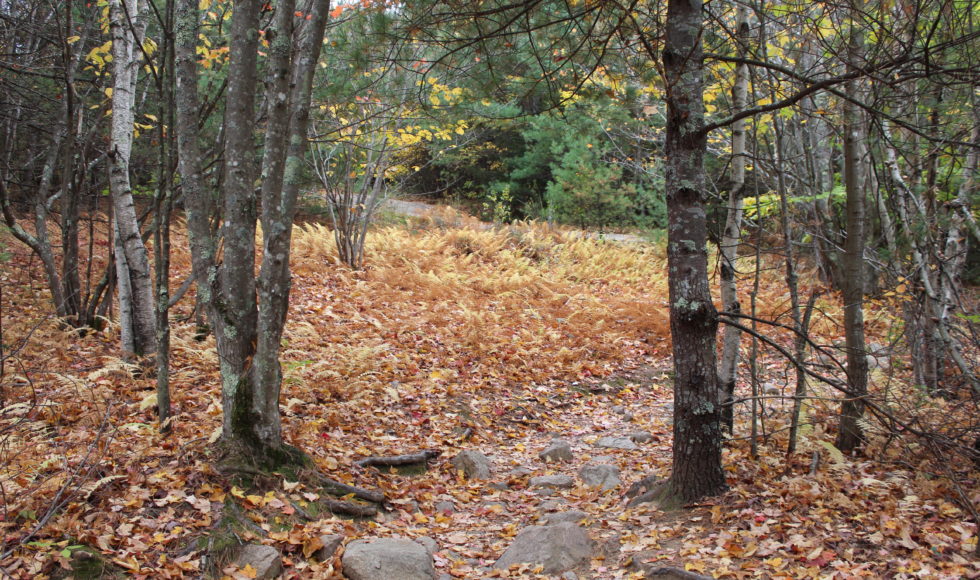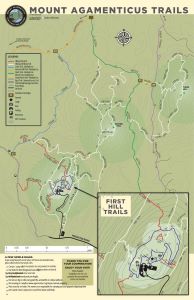The Mount Agamenticus Conservation Region is home to a number of rare and exemplary natural communities.
Vernal Pools – Vernal Pools represent an important wetland type because of their ecological importance as habitat for a number of state rare species. A vernal pool is defined as a “temporary or seasonal body of water that is essential breeding habitat for certain amphibians and invertebrates that does not support fish” (Maine Audubon Society 1996). The Mount Agamenticus area has the highest concentration of vernal pools in New England.
Atlantic White Cedar Swamp – Limited to the coastal plain of Southern Maine. Typical species found are Atlantic white cedar (Chamaecyparis thyoides), red maple (Acer rubrum), highbush blueberry (Vaccinium corymbosum), common winterberry (Ilex verticillata), smooth winterberry and sweet pepperbush.
Oak-Pine Woodland – Found on knolls and hilltops with excessively well-drained soils and bedrock outcrops. Dominant species include northern red oak, black oak (Quercus velutina), and eastern white pine with an herbaceous layer of woodland sedge (Carex lucorum). Shrub species include blueberries (Vaccinium sp.). While common on Mt. A, this community type is uncommon throughout the rest of Maine.
Oak-Hickory Forest – Semi-open to closed canopy forest primarily on south to west facing slopes. Dominant species include white oak, chestnut oak and shagbark hickory. The community often includes understory species, which are common south of Maine, but rare in Maine, such as sassafras and flowering dogwood.
Perched Hemlock-Hardwood Forest – Forms on areas of impermeable bedrock, which traps a pocket of water. Dominant overstory species include black gum (Nyssa sylvatica), red maple and hemlock. Spicebush is a good understory indicator of this community type and another example of a species that is common to the south but is rare in Maine as it is at the northern limit of its range.
Lacustrine Shallow Bottom Community – Found on sandy or somewhat muddy shallows of lakes and ponds where sunlight allows for growth of aquatic bed vegetation. Dominant species include wild celery (Vallisneria americana) and clasping-leaved pondweed (Potomogeton perfoliatum).
Enriched Northern Hardwood Forest – Occurs on moist nutrient rich soils where sugar maple (Acer saccharinum), basswood (Tilia americana) and white ash make up a large component of the community.
Pitch Pine Saturated Woodland – While pitch pine (Pinus rigida) is typically associated with dry barrens or rock outcrops in Maine, in a few locations it occurs in saturated, acidic peatlands. Other dominant species include black spruce (Picea mariana), tamarack (Larix laricina), leatherleaf (Chamaedaphne calyculata), highbush blueberry, mountain holly (Nemopanthus mucronata) and rhodora (Rhododendron canadense).
Floating Kettlehole Bog – Kettlehole bogs are glacial features that are much more common northward and are relatively uncommon in York County. The bog at Round Pond contains a few acres of open water surrounded by zones of arrow arum (Peltandra virginica), leatherleaf and black spruce. While not rare, arrow arum is restricted to Southern Maine and is uncommon in peatlands.
Last modified: February 8, 2019



